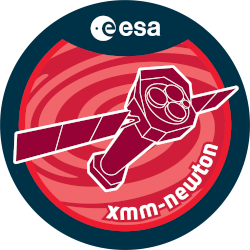

| Proposal ID | 020450 |
| Title | DETERMINING THE NATURE OF THE PECULIAR X-RAY TRANSIENT IGR J16358-4726 |
| Download Data Associated to the proposal | https://nxsa.esac.esa.int/nxsa-sl/servlet/data-action-aio?obsno=0204500201 |
| DOI | https://doi.org/10.5270/esa-qepz8rn |
| Principal Investigator, PI | Dr SANDEEP K. PATEL |
| Abstract | The transient IGR J16358-4726 was discovered on 2003 March 19 by INTEGRAL. OurMarch 24th CXO observation detected the transient at the 1.7e-10 erg cm^-2 s^-1flux level (unabs; 2-10 keV) with a high absorption column (NH=3.3(1)e23 cm^-2)and a hard power law spectrum of index 0.5(1). A strong flux modulation with aperiod of 5860(50)s and PTP pulse fraction of 63(6)% (2-10 keV) is clearlyvisible in the x-ray data. The only NS systems known with similar spin periodsare low luminosity persistent wind-fed pulsars; if this is a spin period, IGRJ16358-4726 is a new kind of object. If this is an orbital period, then thesystem could be a compact LMXB. We request observations with XMM of IGRJ16358-4726 to place constraints to the nature of this enigmatic transient. |
| Publications |
|
| Instrument | EMOS1, EMOS2, EPN, OM, RGS1, RGS2 |
| Temporal Coverage | 2004-02-16T14:10:13Z/2004-09-05T03:09:05Z |
| Version | 17.56_20190403_1200 |
| Mission Description | The European Space Agencys (ESA) X-ray Multi-Mirror Mission (XMM-Newton) was launched by an Ariane 504 on December 10th 1999. XMM-Newton is ESAs second cornerstone of the Horizon 2000 Science Programme. It carries 3 high throughput X-ray telescopes with an unprecedented effective area, and an optical monitor, the first flown on a X-ray observatory. The large collecting area and ability to make long uninterrupted exposures provide highly sensitive observations. Since Earths atmosphere blocks out all X-rays, only a telescope in space can detect and study celestial X-ray sources. The XMM-Newton mission is helping scientists to solve a number of cosmic mysteries, ranging from the enigmatic black holes to the origins of the Universe itself. Observing time on XMM-Newton is being made available to the scientific community, applying for observational periods on a competitive basis. |
| Creator Contact | https://www.cosmos.esa.int/web/xmm-newton/xmm-newton-helpdesk |
| Date Published | 2005-09-26T00:00:00Z |
| Last Update | 2025-01-27 |
| Keywords | "24th cxo", "spin periods", "31e23 cm", "ptp pulse fraction", "igr j16358 4726", "xray data", "ns systems", "spin period", "absorption column nh", "orbital period", "compact lmxb", "flux modulation", "erg cm", "enigmatic transient", "XMM", "flux level unabs" |
| Publisher And Registrant | European Space Agency |
| Credit Guidelines | European Space Agency, Dr SANDEEP K. PATEL, 2005, 'DETERMINING THE NATURE OF THE PECULIAR X-RAY TRANSIENT IGR J16358-4726', 17.56_20190403_1200, European Space Agency, https://doi.org/10.5270/esa-qepz8rn |